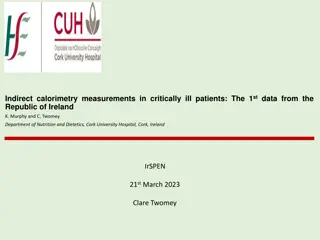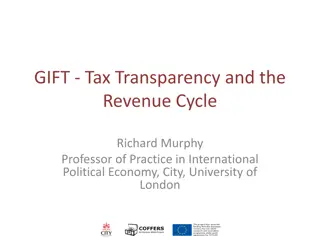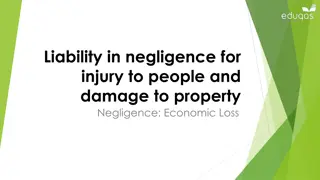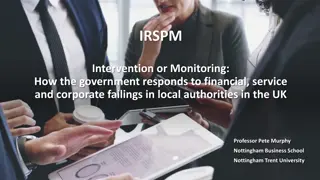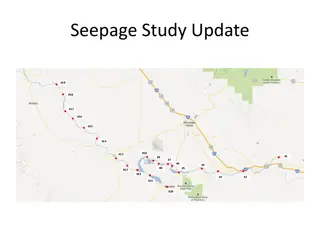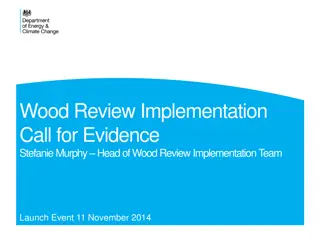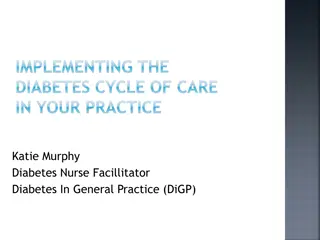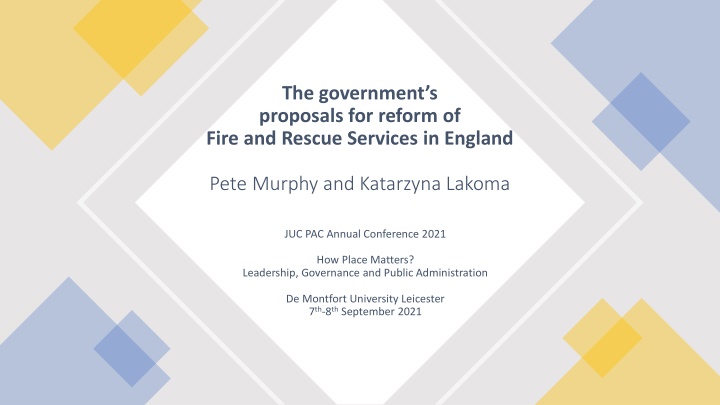
Proposals for Governance Reform in Fire and Rescue Services in England
The paper discusses the government's initiatives to reform Fire and Rescue Services in England, focusing on the transition from Police Authorities to directly elected individuals, the extension of control to all fire services, and recent proposals for governance changes. It highlights key reports and reviews that have influenced the reform process, including the intention to strengthen the commissioner model and the potential challenges ahead, such as operational independence for Chief Fire Officers and consulting on coterminosity issues in specific regions.
Download Presentation

Please find below an Image/Link to download the presentation.
The content on the website is provided AS IS for your information and personal use only. It may not be sold, licensed, or shared on other websites without obtaining consent from the author. If you encounter any issues during the download, it is possible that the publisher has removed the file from their server.
You are allowed to download the files provided on this website for personal or commercial use, subject to the condition that they are used lawfully. All files are the property of their respective owners.
The content on the website is provided AS IS for your information and personal use only. It may not be sold, licensed, or shared on other websites without obtaining consent from the author.
E N D
Presentation Transcript
The governments proposals for reform of Fire and Rescue Services in England Pete Murphy and Katarzyna Lakoma JUC PAC Annual Conference 2021 How Place Matters? Leadership, Governance and Public Administration De Montfort University Leicester 7th-8thSeptember 2021
Introduction and Background 2010-2015 Coalition Government replaced Police Authorities with directly elected individuals responsible for police forces in England and Wales (originally a Labour idea, PCCs were included in 2010 manifesto s of both Conservatives and Liberal Democrats). Introduced by Home Secretary (Mrs May) in Police Reform and Social Responsibility Act 2011 1stelection in Nov 2012 had historically low electoral turnout with a number of independents appointed 2ndelection in May 2016 coincided with local government elections for 40 of 43 territorial police forces - London (Met and City) and Greater Manchester A popular policy within the Tory party clearly associated with Mrs May
2015- 2021 The 2015 Conservative Manifesto (but not Lib Dems or Labour) included a proposal to extend PCCs control to all fire services (PFCCs) 2016 replacement of some PCCs with directly elected mayors (in July 2016 Mrs May becomes Prime Minister). 2017 Policing and Crime Act facilitated PCCs taking responsibility for FRS subject to a local case being made. 2021 election of 39 PCCs, 4 were PFCCs all in England (Essex, Staffs, Northants and North Yorkshire) London, Greater Manchester, West Yorkshire - mayoral models
Fire Service Reform Since July 2020, gov t has received Bob Kerslake s Report on the Manchester Arena Attack, Tom Winsor's reports on the State of Fire and the Fire sector s response to COVID-19 and Tom Redmond s report on Local Audit In July 2020, gov t announced a two-part review of PCCs and PFCCs, with the clear intention of extending and strengthening the commissioner model The Home Secretary announced in March 2021 that further reform will focus on three areas people; professionalism; and governance but would now be published in the autumn of 2021. 1stpart report on changes implementable before May 2021 elections. 2ndpart a White Paper to be published in Spring 2021
Home Secretarys proposals for governance (March 2021) Consultations on whether to mandate the transfer of FRS functions to PFCCs across England. Practical limitations - the government will now be consulting on coterminosity (sic) challenges in the South West, Thames Valley, Sussex, West Mercia and Tyne and Wear. Rather than mandating PFCC everywhere. Operational independence for Chief Fire Officers which also has the potential to clearly separate and delineate strategic and operational planning for F&R and separate budgets in the PFCC model (Winsor reviews also highlighted). Clarify some of the legal entities which anticipates some changes in legal entities as between PCCs/PFCCs and local authorities (the Redmond Review has also highlighted).
Ashworth & Farrell (various and on-going) show there is no substantial evidence produced to support any of the governance models in Fire & Rescue Governance - evidence relating to the new PFCC model Eckersley & Murphy (2019) have shown that the local case evidence for PFCCs to-date is effectively a sham all PFCCs appointed to date have been in heavily conservative areas Lakoma (2021 and ongoing) Is currently assessing (via 6 case studies) the impact on accountability of a governance change from Fire and Rescue Authorities to PFCCs
Have PFCCs improved accountability in practice? (some emerging evidence) New accountability arrangements are significantly more complex than the traditional arrangements. The expanded powers of PFCCs are reflected in more structured and detailed meetings, boards, and panels relating to public accountability, transparency, governance, performance, ethics, and assurance. Mixed views on whether the PFCC improve accountability to local communities. Personal dynamics between CFOs and PFCCs have an important role in developing accountability relationships (in some cases, where roles and responsibilities are not clear, and communication and trust are not apparent, the possibility of goal divergence and conflict is high). Clearer separation of responsibility between strategic governance by PFCCs and operational decision- making by CFOs is being called for in the sector
Sir Tom Winsors called for fundamental reform of the national terms and conditions negotiating machinery in both his 1stand 2nd State of Fire reports. People and Professionalism Winsor includes this within the six national recommendations (identified in 2019 report) which involve major structural aspects which have been delayed by the pandemic and for some work is still in its infancy, or hasn t begun by the end of 2020. While progress in service delivery has been made by local F&RS the national reforms identified by Winsor have not (this reflects the NAO findings in 2016).
Winsors 6 issues to be addressed by the sector The Home Office should precisely determine the role of fire and rescue services, to remove any ambiguity! The sector should remove unjustifiable variation in performance, including their definition of risk. The sector should review and reform how effectively pay and conditions are determined. The Home Office should invest chief fire officers with operational independence, whether through primary legislation or in some other manner. The Home Office should ensure that the sector has sufficient capacity and capability to bring about change There should be a code of ethics
The question of short and long-term resources and the policies of austerity are predictably, but regrettably, absent from the Home Secretary s Statement. Omission 1: Funding and Resources Winsor also ducked this issue and marked as completed the national priority from his first annual report of ensuring the sector has sufficient capacity and capability to bring about change , not whether FRSs have the resources to do the job. Brexit and the COVID-19 pandemic allowed the government to kick these issues into the long grass but no one has yet come up with an acceptable plan for the reform of Local Government Finance. The emergence of financial sustainability and financial resilience has been embraced by HMT, the NAO (in its new Code of Audit Practice), and government for inclusion in the post-Redmond Local Audit regime
Improved accountability, resilience, legitimacy, and scrutiny all rely on adequate data and intelligence. Omission 2: Data and Intelligence While piecemeal improvements have been made, (by NFCC and HMICFRS) the three recent reports investigating the FRS contribution during the pandemic from the NFCC, HMICFRS and the C19 National Foresight Group highlight the continuing inadequacy of the data and intelligence for national and local decision making (Lewin 2020, HMICFRS, 2021, Hill 2021). No mention of Integrated Risk Management Planning Policy making in FRS is being undertaken in a (at least partial) evidential vacuum
Is this a case of benign or malign neglect? Will a White Paper actually emerge? Watch this space! Questions?




